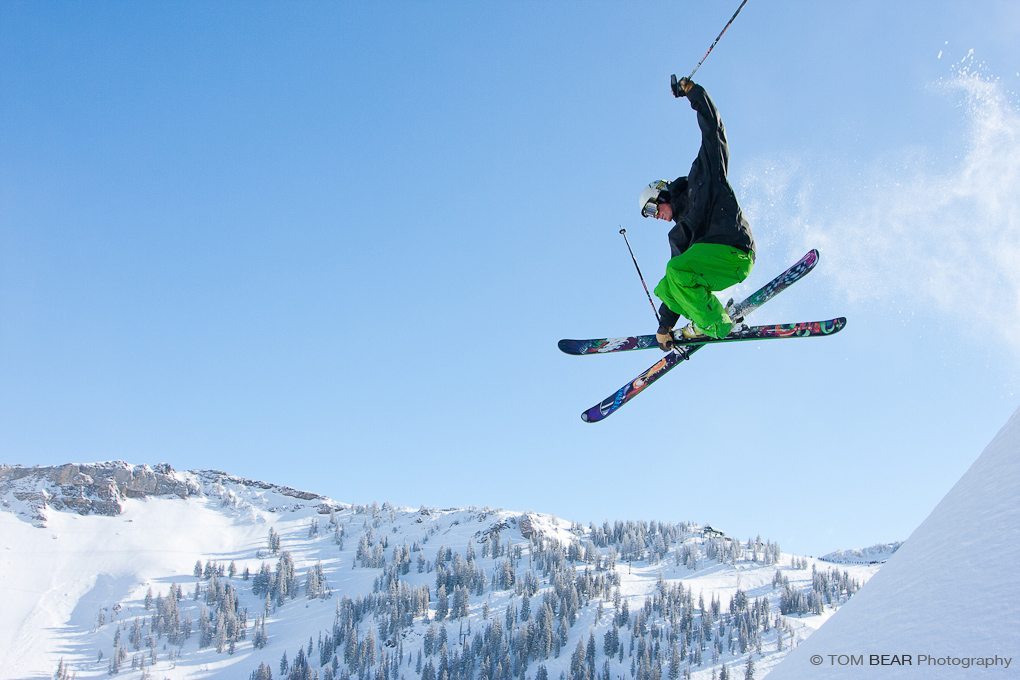A few days later I was able to get the Turbo into everyone’s favorite snow condition, “dust on crust.” What made it even more special was that the 2-4 inches of fresh snow had arrived with a fairly strong wind, creating an excellent mix of hidden pow stashes, dense wind slab, a few creamy spots, and a lovely wind-stripped, slippery, and rock-solid base layer. Again, the Turbo tackled the conditions by delivering a very predictable ride. Transitioning through the varied snow conditions was a snap. The combination of the tip rocker, flex, and sidecut kept the tip from grabbing too aggressively as I progressed into denser snow.
In these softer but varied conditions, however, I started to sense that the Turbo preferred to smear turns rather than carve them; whether they be medium- or long-radius didn’t matter, as long as I wasn’t locked on an edge. I didn’t feel comfortable with the lack of support I was sensing in these conditions from the front of the ski when I wanted to let the skis run and purely carve a turn.
The weeks around the NFL divisional playoffs offered up some fine snow conditions for those of us at Alta. A healthy storm delivered over a foot of fresh, and the following days were a mix of chopped-up freshies along with another smaller, refresher storm.

In the deeper, ‘upside down’ snow of the first big storm, the Turbo provided enough float as long as I kept up my speed. As the snow became more chopped up (which happened very quickly), I again was wishing for a bit more support from the front end of the skis to really feel comfortable flying through the knee-deep crud. A little adjustment of slowing down slightly, going for more playful lines, and linking smeary turns to boost over piles of snow (rather than attempting to cook through them) fit the Turbo’s style much better.
Time in the air on the Turbo felt pretty standard, and offered no surprises. Take-offs and landings were always smooth and predictable. Swing weight felt pretty average for an all-mountain ski of this size.

4FRNT markets the Turbo as the ski for any condition and any terrain. After my time on the Turbo, I’d have to agree.
While it may not offer quite as much pop as I would like, and may be just a touch soft up front, it does provide a ride that will keep you comfortable anywhere on the hill with proper speed management.
While there are skis out there that allow me to do some things better and enhance certain aspects of my skiing more than the Turbo, few skis are as well rounded. The Turbo provided a healthy dose of stability in every condition and type of terrain I encountered for this test.
Would I personally choose it over my beloved Rossignol Sickle as a one-ski quiver for a resort like Alta? No, it’s not quite there, but it’s close, and that’s saying a lot.

Nice write up of the Turbo’s. Have you had a chance to ride the Cody’s. I’m out on the East Coast and thinking that the Cody might be a little better suited for an everyday ski for me due to the smaller waist. Mostly doing my skiing in the trees when I can and when it gets iced up I’d just bring out my fully cambered Mantras.
Brendan,
I haven’t had a chance to ride the Cody’s yet, but I am looking forward to it. Without riding the ski obviously I can’t say too much. Just looking at the 4FRNT website I noticed the Cody has a shorter effective edge length compared to the Turbo. This looks to be caused by the less traditional sidecut profile, and more tip and tail rocker splay.
I have found the edge contact length to be more important on firm conditions than a few millimeters underfoot. Having more edge in contact with the snow surface translates to better edge hold, more consitancy, and increased stability. Without riding the Cody I can’t say I’d recommend it over the Turbo, but I would keep effective edge length in mind when choosing any ski for the East Coast.